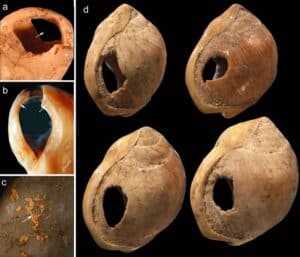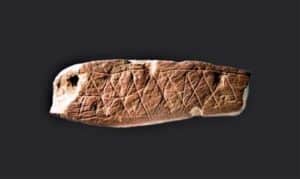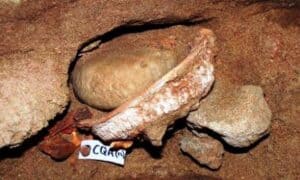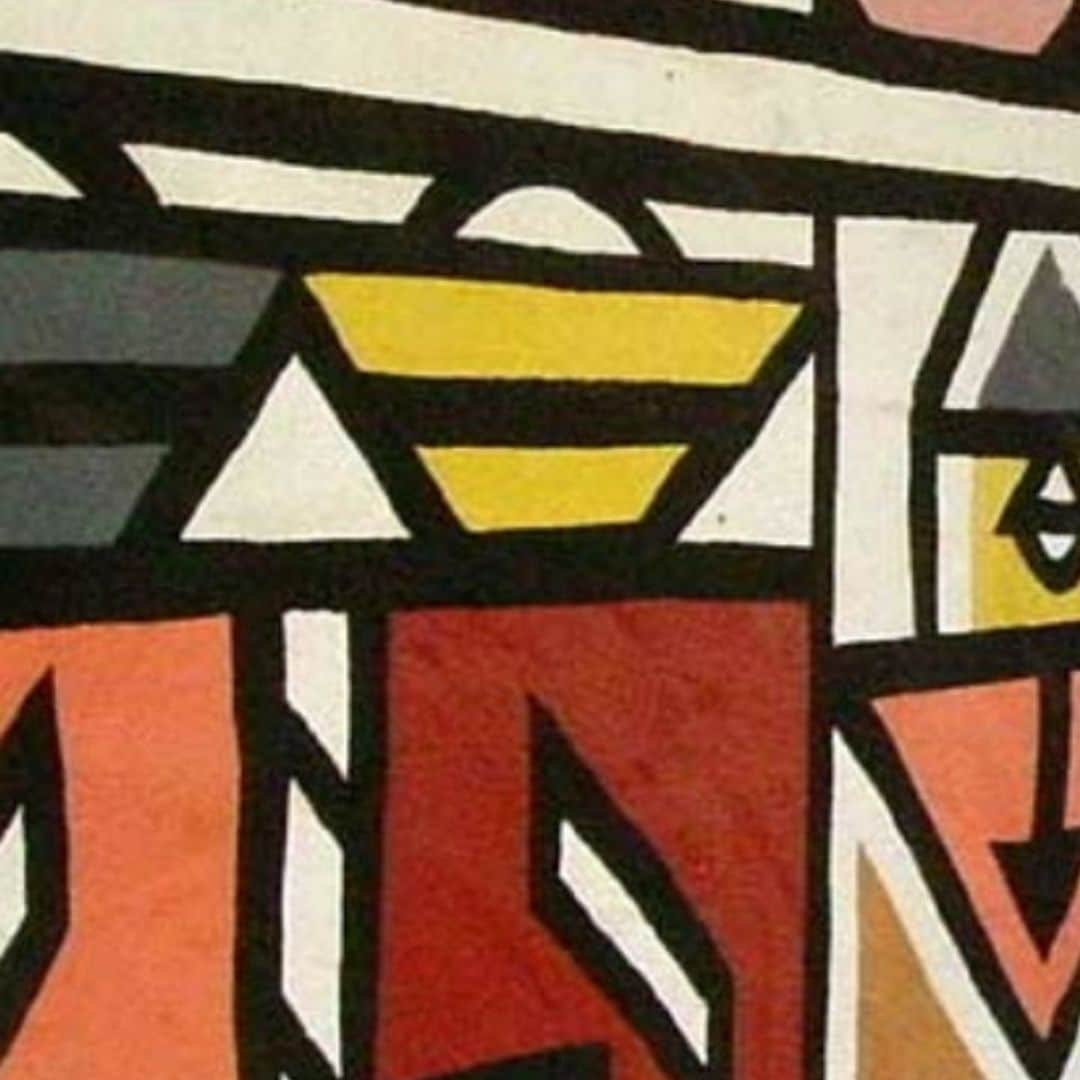In the Blombos Cave was found the oldest artistic work ever found, with 75,000 years of age.
Text: Manuela Tenreiro, author of the online course African Art.
Cover image: Ochre block with incisions forming geometric patterns. ca. 75,000 years ago. Natural History Collection, Iziko Museum, South Africa.
Source: https://originalrockart.wordpress.com/
The Blombos Cave
Located in the Heidelberg Natural Reserve, 300 km west of Cape Town in South Africa, Blombos Cave was found in 1991 by Christopher Henshilwood, Professor of African Pre-history at the University of Witwatersrand in Johannesburg and at the University of Bergen in Norway.
Blombos became an important archaeological site where excavations continue today and where during the last three decades scientists found the oldest signs of human expression in the world.

Shell beads for body ornamentation. ca. 80,000 years ago. Natural History Collection, Iziko Museum, South Africa.
Its archaeological stratigraphy goes back 100,000 years, revealing the secrets of our most remote ancestors’ way of life.
For example, we always enjoyed adorning ourselves. Among the countless objects found were several perforated shell beads used has pendants to adorn the body, recovered from a stratum dated from around 80,000 years ago.






1 Comment.
I like this web